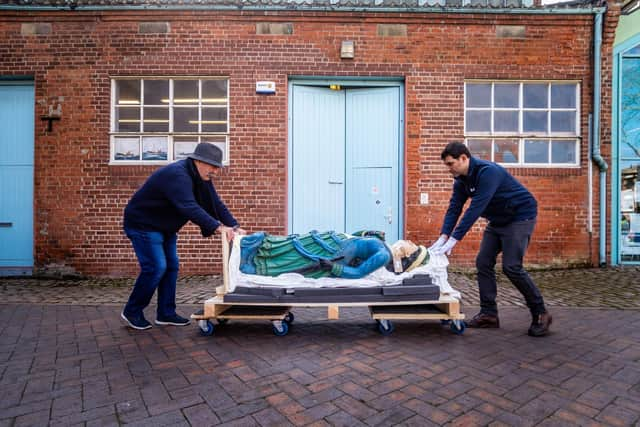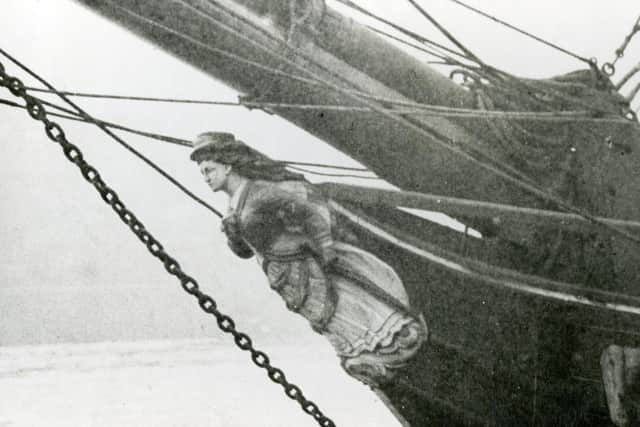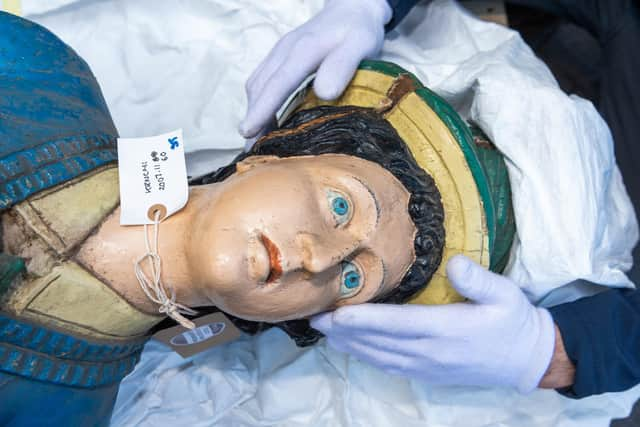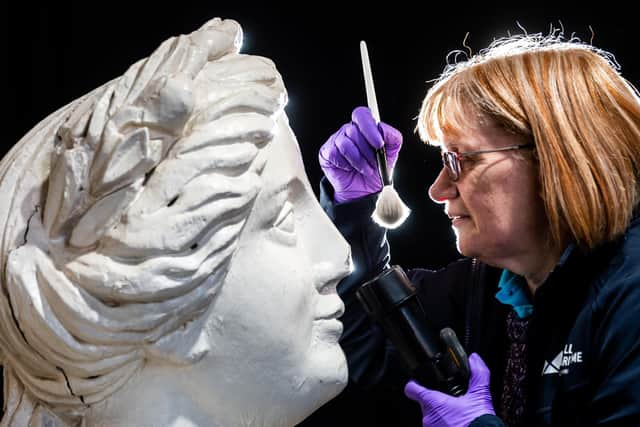Mysteries of the deep at Hull Maritime Museum as trawlerman reminisces about golden age of fishing
But her true identity is still unknown.
The mysterious Lady in Blue is among the objects which are being conserved by volunteers at Hull’s Maritime Museum.
Working with conservator Stathis Tsolis, the small team is trying to make sure artefacts are in the best possible shape for when they go back on display in the museum, which is currently closed for a £12m revamp.


Advertisement
Hide AdAdvertisement
Hide AdThe figurehead, which bears the marks of inexpert attempts to patch her up and has deep cracks, is dressed in a long-sleeved jacket with a tight bodice and straw hat.
Mr Tsolis thinks the Lady in Blue was probably the shipowner’s daughter, but admits it is only a theory.
A late 19th century photograph captured the figurehead where she looks her best, proudly mounted on a ship’s bow, cresting the waves.
But frustratingly only the first three letters of the vessel’s name can be seen in the image.


Advertisement
Hide AdAdvertisement
Hide AdMr Tsolis said: “I’d say it was someone’s daughter. If you were in a position to commission a figurehead you would probably put your daughter there.
“It is pure conjecture - a mystery definitely.”
Among the volunteers in the temporary workshop in the Museums Quarter are ex-fishermen who act as guides on the Arctic Corsair, which is being restored as part of the Hull Maritime project.
Peter Forytarz, 69, remembers wearing the same kind of thick woollen socks when he was working as a distant water fisherman more than 30 years ago.


His grannie used to go down to Tiplady’s on West Dock Avenue for the wool to knit his socks and jumpers - they weren’t called ganseys in Hull.
Advertisement
Hide AdAdvertisement
Hide AdThe fourth generation fisherman did two trips on the Artic Corsair and left the industry in 1968, as Hull’s traditional fishing grounds withered away in the wake of the Cod Wars.
He will be one of the guides for visitors on board the sidewinder trawler when it goes on display alongside a new visitor centre in 2023.
“In your kit bag you had three pairs of boot socks long johns, thermal vests, shirts, jumpers and mufflers to wear round your neck and you got changed once a week,” he recalled.


"It was cold and bloody hard work especially in wintertime, 18 hours on and six off.”
Advertisement
Hide AdAdvertisement
Hide AdAnother figurehead the volunteers are working on has lost the tip of her nose. A classical female bust painted white, with drapes pulled from the bosom and a laurel wreath she was probably from a Royal Navy frigate. Volunteers have been crafting new noses which should restore her noble looks.
Despite the superstition that a woman on board a ship was bad luck, there was an ancient belief that women have a power over the sea that men did not - which may explain why so many ships figureheads were of women.
Some ships of the 17th to 18th century boasted gigantic figureheads, weighing several tons. The last British battleship to carry a figurehead was the HMS Rodney launched in 1901.
Comment Guidelines
National World encourages reader discussion on our stories. User feedback, insights and back-and-forth exchanges add a rich layer of context to reporting. Please review our Community Guidelines before commenting.